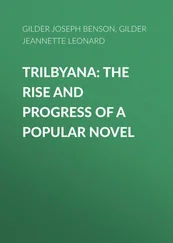Wilhelm Joseph von Wasielewski - The Violoncello and Its History
Здесь есть возможность читать онлайн «Wilhelm Joseph von Wasielewski - The Violoncello and Its History» — ознакомительный отрывок электронной книги совершенно бесплатно, а после прочтения отрывка купить полную версию. В некоторых случаях можно слушать аудио, скачать через торрент в формате fb2 и присутствует краткое содержание. Жанр: foreign_antique, foreign_home, music_dancing, на английском языке. Описание произведения, (предисловие) а так же отзывы посетителей доступны на портале библиотеки ЛибКат.
- Название:The Violoncello and Its History
- Автор:
- Жанр:
- Год:неизвестен
- ISBN:нет данных
- Рейтинг книги:3 / 5. Голосов: 1
-
Избранное:Добавить в избранное
- Отзывы:
-
Ваша оценка:
- 60
- 1
- 2
- 3
- 4
- 5
The Violoncello and Its History: краткое содержание, описание и аннотация
Предлагаем к чтению аннотацию, описание, краткое содержание или предисловие (зависит от того, что написал сам автор книги «The Violoncello and Its History»). Если вы не нашли необходимую информацию о книге — напишите в комментариях, мы постараемся отыскать её.
The Violoncello and Its History — читать онлайн ознакомительный отрывок
Ниже представлен текст книги, разбитый по страницам. Система сохранения места последней прочитанной страницы, позволяет с удобством читать онлайн бесплатно книгу «The Violoncello and Its History», без необходимости каждый раз заново искать на чём Вы остановились. Поставьте закладку, и сможете в любой момент перейти на страницу, на которой закончили чтение.
Интервал:
Закладка:

The Abbé Tardieu already referred to, who played the violoncello, according to Gerber, had the same tuning on his instrument. About the third decade of the last century, those who used five-stringed instruments gave up the highest string—(the D). From that time the four-stringed instrument with the tuning C, G, D, A came very generally into use. The latter was not altogether a novelty. Prätorius mentions it in his “Syntagma Mus.” as the “Bass Viol de Braccio.” 55 55 Michael Corrette in the preface to his Violoncello Tutor refers to a stringed instrument in general use before the introduction of the violoncello into France with the tuning B, F, C, G, which he calls Basse de Violon. The instrument must be identical with the one described by Mattheson as Basse de Violon.
In Germany the use of the violoncello as an orchestral instrument ensued later than in Italy, though much sooner than in France. For although it had been introduced into the Parisian Opera in 1727, by the cellist Batistin, to be mentioned later on, it had been already in use since 1680 in the Vienna Hofkapelle. The Saxon Hofkapelle at Dresden next followed by the installation of four violoncellists. Their names are Daniel Hennig, Agostino Antonio de Rossi, Jean Baptiste José du Houbondel, and Jean Prach de Tilloy. 56 56 Fürstenau: “On the History of Music and the Theatre at the Court of the Princes of Saxony.”
As two of these players have French names, it is to be assumed that the violoncello had already found representatives in France at the beginning of the eighteenth century.
The example set by Vienna and Dresden was soon imitated also by other German Courts. The band of Duke Charles Ulrich of Holstein-Gottorp affords a case in point. As this prince, the future son-in-law of Peter the Great, found himself obliged, in 1720, to reside at the Russian Imperial Court, his private musicians followed him thither, amongst whom there was a cellist. 57 57 Hiller, Weekly News of May 21, 1770.
As the gamba enjoyed a great amount of favour 58 58 Mattheson says, in his “Neu eröffneten Orchestre,” that this instrument (Basse de Viole) was singularly prized and cultivated.
in Germany, the introduction of the violoncello was not effected without difficulty, to which indeed the gambists, who thought their pretended rights were thereby infringed, not a little contributed. For in a paper which appeared in 1757 in the French language, “Observations sur la Musique,” &c., it is said: “La seule basse de viole a déclaré la guerre au violoncelle qui a remporté la victoire et elle a été si complète que l’on craint maintenant que la fameuse viole, l’incomparable sicilienne ne soit vendue à quelque inventaire à un prix médiocre et que quelque luthier profane ne s’avise d’en faire une enseigne.” 59 59 H. Leblanc published a “Défense de la Basse de Viole contre les entreprises du Violon et les prétentions du Violoncel.” Amsterdam, 1740.—( Tr. )
It was not quite so bad as the last words of the announcement lead one to suppose. Even if the violoncello caused the gamba to be quite superfluous in the orchestra, the latter was cultivated as a solo instrument for some time longer, and many of the good old gambas were in course of time metamorphosed into violoncellos, and made available for further use; while the more insignificant specimens were destroyed, if they were not required for completing instrumental collections and so preserved from destruction.
The art of violoncello playing in the first stages of its development was, as regards the method of treatment, not so much favoured as violin playing. To the latter a definite direction for imitation was early given, as soon indeed as the end of the seventeenth century, by the Roman school founded by Arcangelo Corelli, which was soon followed by the foundation of the Paduan and Piedmontese schools. Violoncello playing lacked such classical parent schools. When a few prominent artists of this instrument had brought it into greater consideration, centres were formed by distinguished masters for the study of the cello, which supplied the want of proper schools, about which we shall have more to say farther on.
It is easy to understand how it followed that the violoncello was first valued in the land of its birth—that is, in Italy, not only as an orchestral instrument but also for solo playing. How this important branch of art was there developed we shall see in the next section.
I.—ITALY
Italy has the claim of priority in violoncello as well as violin playing. It was the birthplace of the violin and of the cello, and from thence emanated the artistic executive development of both instruments. The first famous Italian cellist of whom we have any notice is—
Domenico Gabrieli, with the surname of Menghino del Violoncello, born about 1640 at Bologna, died in 1690. This artist found a sphere of work in the church of San Petronio in his native town. Then he entered the service of Cardinal Pamfili in Rome. Gabrieli was also a composer of some repute. Fétis mentions eight of his operas which were written partly for Bologna and partly for Venice. His other works consist of a “Cantata a voce sola,” in a collection of Motets, entitled “Vexillum pacis,” for alto solo and instrumental accompaniments, as well as “Baletti, gighe, correnti, e sarabande a due violini e violoncello, con basso continuo” (Op. 1). These three works, of which the last is a reprint, appeared successively in 1691, 1695, and 1703, consequently after Gabrieli’s death. He appears to have composed nothing specially for the cello.
More remarkable as a cellist must have been Attilio Ariosti, the Dominican monk, born at Bologna in 1660. Gerber at least says of him that he was one of the most excellent violoncellists of his time. But he was also a distinguished performer on the Viola d’amore. He occupied himself chiefly, however, with opera compositions, for which the Pope granted him a dispensation from the rule of his order, as without it, being a Dominican, he was forbidden to meddle with anything connected with the theatre. In 1698 Ariosti was sent for to Berlin as Kapellmeister to the Elector of Brandenberg. Thence he went in 1716 to London, where, in the proximity of Handel, he could make no way, and therefore at last returned to his fatherland. He chose Bologna as his place of residence. Like Gabrieli, he appears to have produced no independent 60 60 Some pieces composed for the viola d’amore by Ariosti, consisting of Cantabile, Vivace, Adagio, and Minuet, have been arranged by Alfred Piatti for the violoncello, and brought out lately in London.
violoncello compositions.
His fellow-country man, Giovanni Battista Bononcini (Buononcini), 61 61 Concerning the diverse vicissitudes of Bononcini’s and Ariosti’s lives, which can find no particular mention here, see “Musical Lexicons,” extant.
famous as an able cellist, also devoted his talent by preference to the operatic stage. He was the eldest son of the choirmaster, Giov. Maria Bononcini, at the church S. Giovanni, in Monte, at Modena, and was born in 1672, or, according to Fétis, in 1667 or 1668. At first instructed in music by his father, and then perfected by Colonna at Bologna, he betook himself, at twenty-two or twenty-three years of age, to Vienna, where he found a post as cellist in the Imperial Kapelle. Here he turned to opera, which at that time was a favourite means of entertainment for the seeing and listening public, and promised more reputation and gain than all other kinds of composition.
Интервал:
Закладка:
Похожие книги на «The Violoncello and Its History»
Представляем Вашему вниманию похожие книги на «The Violoncello and Its History» списком для выбора. Мы отобрали схожую по названию и смыслу литературу в надежде предоставить читателям больше вариантов отыскать новые, интересные, ещё непрочитанные произведения.
Обсуждение, отзывы о книге «The Violoncello and Its History» и просто собственные мнения читателей. Оставьте ваши комментарии, напишите, что Вы думаете о произведении, его смысле или главных героях. Укажите что конкретно понравилось, а что нет, и почему Вы так считаете.












![Edward Ellis - Adrift on the Pacific - A Boys [sic] Story of the Sea and its Perils](/books/753342/edward-ellis-adrift-on-the-pacific-a-boys-sic-s-thumb.webp)